Betaxolol: Understanding Its Role in Glaucoma Treatment

Glaucoma doesn’t always show symptoms until vision loss is already happening. That’s why doctors rely on medications like betaxolol to slow it down before it’s too late. Betaxolol isn’t a cure, but for many people, it’s a critical tool to keep their vision stable. It’s one of several eye drops used to lower pressure inside the eye - a key factor in preventing optic nerve damage. Unlike some other glaucoma drugs, betaxolol works differently, and that matters when choosing the right treatment plan.
How Betaxolol Lowers Eye Pressure
Betaxolol is a beta blocker, but not the kind you take as a pill for your heart. It’s a topical eye drop, applied once or twice daily. Its job is simple: reduce how much fluid your eye produces. Inside your eye, a clear liquid called aqueous humor flows in and out to maintain pressure. When production outpaces drainage, pressure builds up - and that’s what damages the optic nerve over time.
Betaxolol targets beta-1 receptors in the ciliary body, the part of the eye that makes this fluid. By blocking those receptors, it cuts down on fluid production by about 20-25%. That’s enough to bring pressure down from dangerous levels to safer ones - often from 28 mmHg to 18 mmHg or lower. It doesn’t improve drainage like some other drugs (like latanoprost), but it doesn’t need to. Slowing production is enough to protect vision in many cases.
Why Doctors Choose Betaxolol Over Other Eye Drops
There are dozens of glaucoma eye drops on the market. So why pick betaxolol? One reason is its safety profile. It’s a cardioselective beta blocker, meaning it mostly affects the heart’s beta-1 receptors and has less impact on the lungs than older beta blockers like timolol. That makes it a better choice for people with asthma or chronic bronchitis, who can’t use non-selective beta blockers without risking breathing problems.
Another advantage? It’s less likely to cause redness or irritation than prostaglandin analogs like travoprost. Some patients get so irritated by those drops they stop using them - which defeats the whole purpose. Betaxolol tends to be gentler on the surface of the eye. That’s why it’s often used as a first-line option for patients who can’t tolerate other medications or who have mild to moderate glaucoma.
It’s also used in combination therapy. If one drop isn’t enough, doctors often pair betaxolol with a drug that improves drainage - like dorzolamide or brimonidine. That combo can lower pressure more than either drug alone. Studies show that combining betaxolol with dorzolamide reduces intraocular pressure by an extra 5-7 mmHg compared to either drug used by itself.
Who Shouldn’t Use Betaxolol
Betaxolol isn’t for everyone. People with severe heart conditions - like heart block, bradycardia (slow heart rate), or heart failure - should avoid it. Even though it’s an eye drop, a small amount gets absorbed into the bloodstream. In rare cases, that can slow the heart rate enough to cause dizziness, fatigue, or even fainting.
If you have diabetes, betaxolol can mask the warning signs of low blood sugar. You might not feel your heart racing or shaking when your glucose drops, which could delay treatment. Diabetics using betaxolol need to check their blood sugar more often.
It’s also not recommended for children under 18. Most studies on its safety and effectiveness were done in adults. And while it’s generally safe during pregnancy, doctors will only prescribe it if the benefits clearly outweigh the risks. Always tell your eye doctor about all your medical conditions and medications before starting.
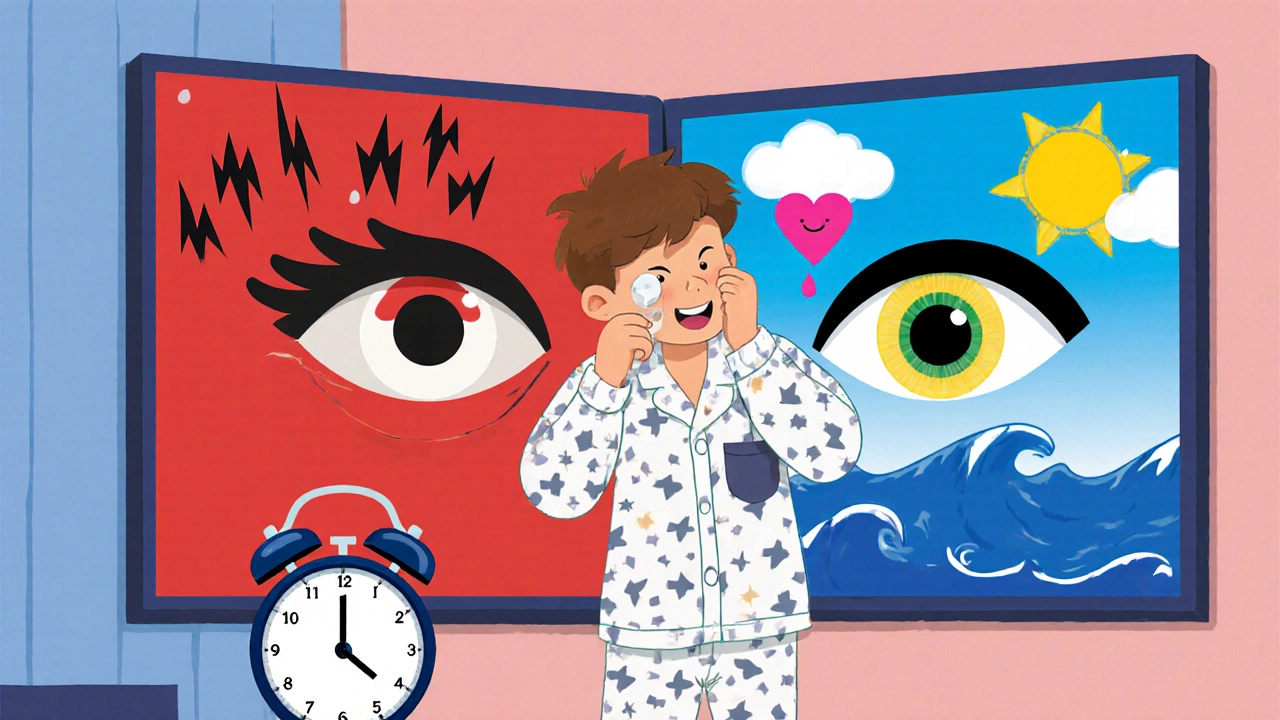
How to Use Betaxolol Correctly
Using eye drops right makes a huge difference. Here’s how to get the most out of betaxolol:
- Wash your hands before handling the bottle.
- Tilt your head back and pull down your lower eyelid to form a pocket.
- Hold the bottle close to your eye - don’t let the tip touch your skin or eyelashes.
- Squeeze one drop into the pocket. Close your eye gently for 1-2 minutes.
- Press the inner corner of your eye (near your nose) with your finger. This blocks the tear duct and keeps more of the medicine in your eye.
- If you’re using other drops, wait at least 5 minutes between them.
Don’t skip doses. Glaucoma doesn’t hurt, so it’s easy to forget. But skipping even one day can let pressure creep back up. Set a phone alarm or use a pill organizer with a daily eye drop slot. Consistency is what keeps your vision intact.
Side Effects to Watch For
Most people tolerate betaxolol well. But side effects do happen. The most common ones are mild:
- Burning or stinging right after applying the drop
- Itchy or dry eyes
- Blurred vision for a few minutes
- Headache or dizziness
Less common but more serious side effects include:
- Slow or irregular heartbeat
- Shortness of breath
- Swelling in the hands or feet
- Depression or mood changes
If you notice any of these, contact your doctor. Don’t stop the drops suddenly - that can cause a dangerous spike in eye pressure. Your doctor will help you taper off safely if needed.
How Betaxolol Compares to Other Glaucoma Treatments
Here’s how betaxolol stacks up against other common glaucoma medications:
| Medication | Type | How It Works | Frequency | Best For | Key Risks |
|---|---|---|---|---|---|
| Betaxolol | Beta blocker (selective) | Reduces fluid production | Once or twice daily | Patients with asthma, mild glaucoma | Slow heart rate, fatigue |
| Timolol | Beta blocker (non-selective) | Reduces fluid production | Twice daily | General use | Can worsen asthma, depression |
| Latanoprost | Prostaglandin analog | Improves fluid drainage | Once daily (evening) | Strong pressure reduction | Eye color change, eyelash growth |
| Dorzolamide | Carbonic anhydrase inhibitor | Reduces fluid production | Three times daily | Combination therapy | Bitter taste, tingling fingers |
| Brimonidine | Alpha agonist | Reduces production + improves drainage | Twice daily | Patients with narrow angles | Drowsiness, dry mouth |
As you can see, betaxolol doesn’t lower pressure as much as latanoprost - but it’s safer for people with breathing issues. It’s not as convenient as once-daily drops, but it’s easier to tolerate than drops that cause bitter taste or frequent dosing. It’s not the strongest, but it’s one of the most balanced options.
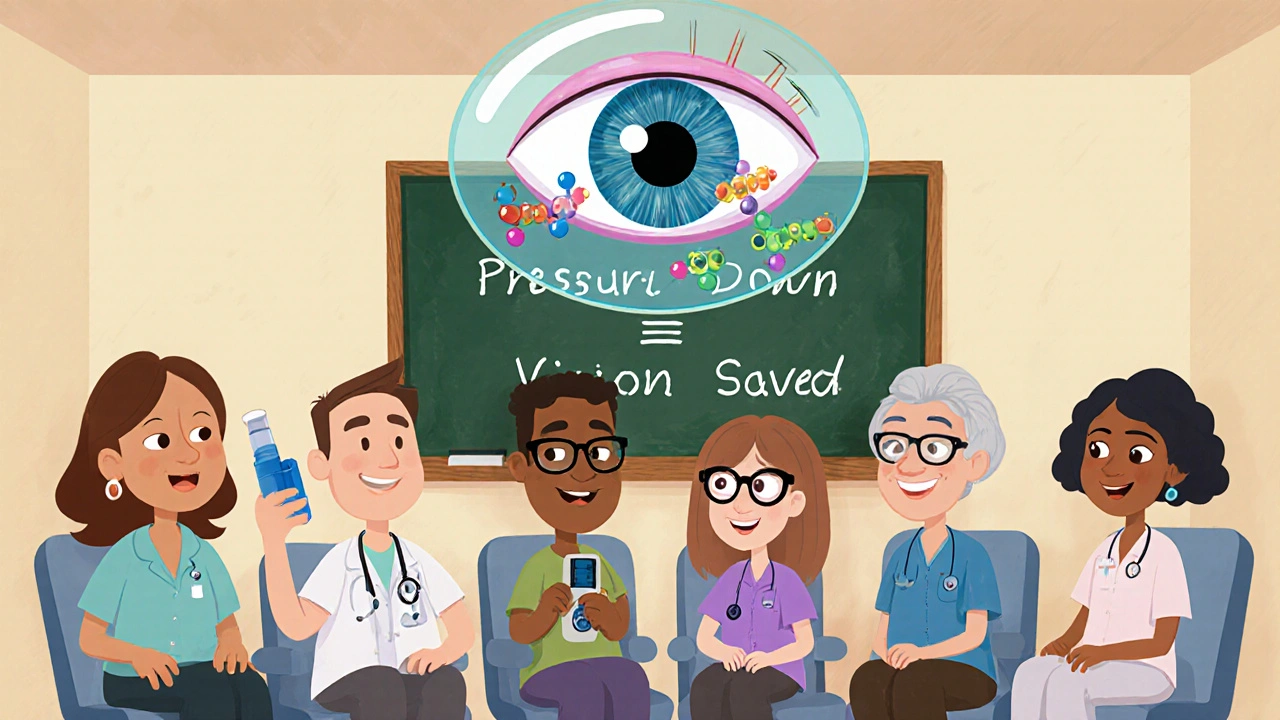
What Happens If Betaxolol Stops Working?
Over time, some patients find their eye pressure starts creeping back up even with regular use. This is called tachyphylaxis - a reduced response to the drug. It doesn’t happen to everyone, but it’s common enough that doctors watch for it.
If betaxolol isn’t enough anymore, your doctor won’t just up the dose. More drops won’t help - the effect plateaus. Instead, they’ll add another medication, switch to a different class, or consider laser treatment or surgery. Many patients move to prostaglandin analogs like tafluprost, which are more effective and require only one daily dose.
It’s not a failure. Glaucoma is a progressive disease. Treatment plans evolve as the condition changes. The goal isn’t to find the perfect drop forever - it’s to find the right combination that keeps your pressure low enough to protect your vision for decades.
Long-Term Use and Monitoring
People on betaxolol usually need regular checkups every 3 to 6 months. Your eye doctor will measure your intraocular pressure, check your optic nerve with an OCT scan, and test your peripheral vision. These aren’t just routine visits - they’re your early warning system.
Even if your vision feels fine, damage can still be happening. Glaucoma steals peripheral vision first. You won’t notice it until it’s advanced. That’s why monitoring is non-negotiable. Don’t skip appointments just because you feel okay.
Also, keep track of your eye drop supply. Running out for even a few days can cause pressure spikes. Some pharmacies offer automatic refills for chronic medications like this. Ask your pharmacist about setting one up.
Can betaxolol cure glaucoma?
No, betaxolol cannot cure glaucoma. It only helps manage the condition by lowering intraocular pressure to slow or prevent further damage to the optic nerve. Glaucoma damage is permanent, so the goal of treatment is to preserve remaining vision, not restore lost vision.
How long does it take for betaxolol to start working?
Betaxolol begins lowering eye pressure within about an hour after application. Peak effect usually occurs 2 to 4 hours later. However, it takes consistent daily use over several weeks to reach its full pressure-lowering potential. Missing doses reduces its effectiveness.
Is betaxolol safe for long-term use?
Yes, betaxolol is generally safe for long-term use when monitored by a doctor. Studies have shown patients using it daily for over 10 years without serious complications. Regular checkups are essential to catch any side effects early, like slow heart rate or worsening asthma symptoms.
Can I use betaxolol with contact lenses?
Yes, but remove your contacts before applying the drops. Wait at least 15 minutes after using betaxolol before putting your lenses back in. The preservative in the solution can stick to soft lenses and irritate your eyes.
What should I do if I miss a dose of betaxolol?
If you miss a dose, apply it as soon as you remember. But if it’s almost time for your next dose, skip the missed one and go back to your regular schedule. Never double up on doses to make up for a missed one - that can increase side effects without adding benefit.
Does betaxolol interact with other medications?
Yes. Betaxolol can interact with oral beta blockers, calcium channel blockers, and certain antidepressants. It may also mask symptoms of low blood sugar in diabetics. Always tell your eye doctor and pharmacist about every medication you take, including over-the-counter drugs and supplements.
Next Steps for Patients on Betaxolol
If you’re starting betaxolol, your first step is to build a routine. Pair it with something you do every day - like brushing your teeth or having breakfast. That makes it easier to remember.
Keep a small notebook or use a phone app to track your eye pressure readings and any side effects. Bring it to every appointment. It helps your doctor spot patterns - like whether pressure rises more in the morning or after stress.
And if you’re worried about cost, ask about generic versions. Betaxolol is available as a generic eye drop, often under $20 for a 2.5 mL bottle with a good insurance plan. Some patient assistance programs also help reduce out-of-pocket costs.
Glaucoma doesn’t go away. But with the right treatment - and consistent use - you can live a full life without losing your sight. Betaxolol isn’t flashy. But for many, it’s the quiet, reliable shield that keeps vision intact.

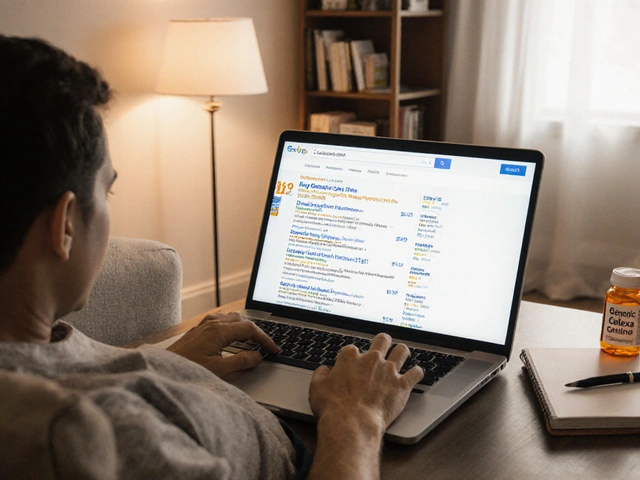

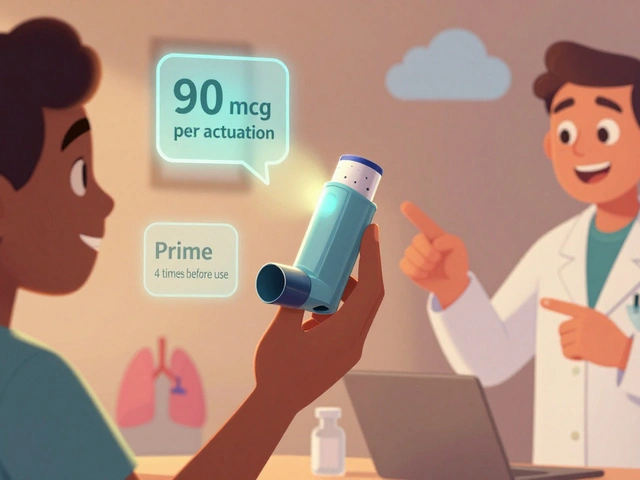

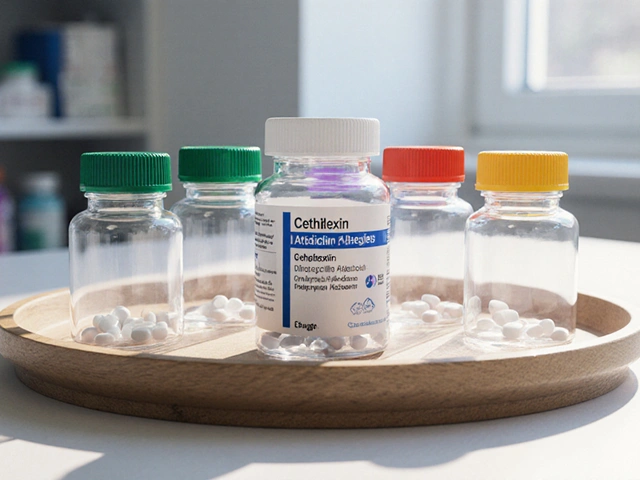
Jeff Moeller
November 19, 2025 AT 00:14Betaxolol doesn't cure anything it just buys time like all these meds do
Bette Rivas
November 19, 2025 AT 10:39One thing people overlook is how the preservative in betaxolol can wreck your tear film over time. I’ve been on it for 7 years and my dry eye got so bad I had to switch to preservative-free brimonidine. The pressure stayed stable but my eyes stopped feeling like sandpaper. Also - never use the same bottle past 28 days even if it says ‘use by’ 3 months. Bacteria loves those droppers.
And yes, the 15-minute wait after drops before contacts? Non-negotiable. I learned that the hard way after a corneal abrasion. No more shortcuts.
Also, if you’re on beta blockers for your heart and get prescribed this - tell your cardiologist. I had a patient whose heart rate dropped to 42 bpm because he didn’t connect the dots. He was fine once they switched him, but that’s the kind of thing that sneaks up on you.
Don’t assume ‘topical’ means ‘safe.’ Your body absorbs more than you think. Especially if you have narrow eyelid fissures or tear duct issues. I’ve seen people with chronic conjunctivitis from overuse. It’s not the drug - it’s the delivery.
And yes, generic is fine. The brand version is just a fancy bottle with a higher markup. Same active ingredient. Same efficacy. Save your money.
One more thing - if your pressure drops below 10 mmHg consistently, that’s not a win. That’s a red flag. Too low can cause hypoperfusion of the optic nerve. You want safe, not ultra-low. Your doctor should be checking for that.
And if you’re diabetic and your sugar readings are weird after starting this - don’t blame your diet. Blame the beta blocker masking hypoglycemia. Get a CGM. It’s life-changing.
Finally - track your drops. I had a guy come in thinking he was ‘on schedule’ but he was skipping days because he thought ‘it’s just eye drops.’ Glaucoma doesn’t care how you feel. It’s not a suggestion. It’s a lifeline.
Tyrone Luton
November 20, 2025 AT 08:00People treat glaucoma like it’s a bug you can spray away. It’s not. It’s a slow death of your peripheral vision and betaxolol is just the bandage. The real problem is we don’t screen enough. You don’t get tested until you’re 40? That’s too late. I’ve seen 28-year-olds with advanced glaucoma because they never got a checkup. It’s not about the drug - it’s about the system that waits until you’re blind to care.
And don’t get me started on how we treat eye doctors like pharmacists. You don’t just get a script and go. You need ongoing monitoring. OCT scans. Visual fields. I’ve had patients skip appointments because ‘they feel fine.’ You don’t feel glaucoma until it’s too late. That’s the whole point.
And yes - betaxolol is gentler than timolol. But it’s still a beta blocker. If you have asthma, yes, it’s safer. But if you have sleep apnea? That’s a different story. The systemic absorption can worsen overnight hypoxia. No one tells you that.
And why do we keep prescribing this when prostaglandins are more effective? Because insurance. Betaxolol is cheaper. Not better. Just cheaper. And that’s not medicine. That’s accounting.
Stop pretending these drugs are magic. They’re just delaying the inevitable. The real cure? Early detection. Better screening. Accessible care. Not another drop.
Ankita Sinha
November 20, 2025 AT 18:37I’ve been on betaxolol for 5 years and honestly it’s been a game-changer. I used to forget everything but now I pair it with my morning coffee - one drop, sip, done. No more panic about losing my sight. I even started a little tracker on my phone - pressure readings, side effects, mood. It helps me feel in control.
And yes, the stinging at first? Totally normal. Just blink a few times and it’s gone. Don’t panic. I used to think I was allergic until my doctor said it was just the pH. So chill.
Also - if you’re on other meds, tell your eye doc. I was on an antidepressant and didn’t realize it could interact. My doctor caught it before I had a bad day. That’s why you need good communication, not just good drops.
Glaucoma is scary but you’re not alone. I joined a Reddit group and it helped so much. Just knowing others are fighting the same battle makes it feel less lonely.
Hannah Machiorlete
November 22, 2025 AT 00:14Ugh I hate how they make this sound like it’s some miracle cure. It’s just another drug that makes you feel like you’re doing something while your vision slowly fades. And the side effects? Dry eyes, dizziness, fatigue - like yeah thanks for making me feel like a zombie so I can ‘preserve’ what’s left. What a deal.
And don’t even get me started on the ‘wait 15 minutes’ rule. Who has time for that? I work two jobs. I can’t sit there holding my eye closed like a lab rat. And the preservative? Yeah right, like that’s not gonna burn my cornea after 3 years.
They just want you addicted to drops so you keep coming back. It’s not medicine. It’s a business model.
Herbert Scheffknecht
November 22, 2025 AT 23:52Betaxolol is a paradox - it’s a weapon forged from the same chemistry that slows the heart, yet it’s applied to the eye to preserve sight. We treat the symptom and call it control, but we never ask why the fluid builds up in the first place. Is it the pressure? Or is it the body’s failure to communicate with itself?
Medicine fixes what it can see. But glaucoma hides in the dark. It doesn’t scream. It doesn’t bleed. It just… stops. And we hand people a bottle and say ‘use this.’
What if the problem isn’t the eye? What if it’s the system - the stress, the sleep, the light, the silence we live in? We treat the organ like a machine, but the body is not a machine. It’s a conversation.
Betaxolol lowers pressure. But does it lower the noise? The anxiety? The fear that comes with knowing your vision is slipping away? Maybe the real treatment isn’t in the bottle - it’s in the quiet moments after you close your eyes and just breathe.
We’ve forgotten that healing isn’t just about chemistry. It’s about presence. And maybe the most powerful thing you can do is not just use the drop - but sit with the silence it leaves behind.
That’s not science. That’s soul.
And if you think I’m being dramatic - go blind for a day. Then come back and tell me if you still think it’s just about pressure numbers.
Greg Knight
November 24, 2025 AT 04:10Look, I’ve been managing glaucoma for over a decade and I’ve tried every drop under the sun. Betaxolol? Honestly? It’s the one I keep coming back to. Not because it’s the strongest - it’s not. But because it’s the most predictable. No weird taste. No eyelash growth. No red eyes that make me feel like I’ve been crying all day.
I used to use latanoprost - amazing pressure drop, yeah. But my eyes looked like I’d been in a fight. People kept asking if I was okay. I didn’t want to explain. Betaxolol? No one notices. I just blink, go about my day.
And the twice-daily dosing? Yeah, it’s a pain. But I set two alarms - one for breakfast, one for dinner. It’s become part of my routine. Like brushing my teeth. You don’t think about it. You just do it.
And if you’re worried about heart stuff? Talk to your doctor. Get a baseline EKG. Monitor your pulse. It’s not scary if you’re informed. I’ve been on it for 8 years and my heart’s fine. The key is awareness, not fear.
And if you think it’s expensive? Get the generic. I pay $12 a month with my insurance. That’s less than a coffee a week. You’re not paying for the drug - you’re paying for your sight. That’s a bargain.
Don’t let fear or laziness steal your vision. This isn’t a miracle. It’s a tool. Use it right. Stay consistent. And don’t skip appointments. Your future self will thank you.
Glaucoma doesn’t care how you feel. But you? You still have a chance. Don’t waste it.
darnell hunter
November 24, 2025 AT 13:14It is a matter of national concern that the American medical establishment continues to promote pharmacological interventions over systemic preventative measures. Betaxolol, while marginally efficacious, is emblematic of a broader pathology: the commodification of health. The American patient is conditioned to believe that a drop in the eye is sufficient to counteract decades of sedentary lifestyle, poor nutrition, and environmental toxins. This is not medicine. This is corporate negligence dressed in white coats.
Furthermore, the promotion of generic formulations as equivalent is misleading. Bioequivalence does not imply therapeutic equivalence. The excipients, the pH buffers, the preservatives - these are not inert. They are chemical agents with cumulative effects. The FDA approval process is a charade.
It is also noteworthy that the article fails to mention the systemic absorption of betaxolol in relation to cardiovascular mortality in elderly populations. The data is clear. Beta-blockers, even topical, are associated with increased all-cause mortality in patients over 65. Yet, the pharmaceutical industry continues to market them as ‘safe’ for asthmatics - a convenient fiction.
The true solution lies not in eye drops, but in public health reform: universal screening before age 35, mandatory ocular wellness education in schools, and the elimination of profit-driven incentives in ophthalmology.
Until then, we are merely delaying the inevitable with chemical Band-Aids.